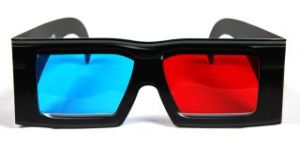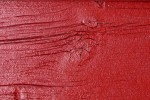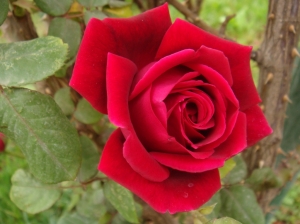Color. It defines our reality, evokes emotion, can affect our choices, and makes a difference in the way we look. All of us are familiar with the primary colors, but this post reveals some little-known facts that may surprise you.
Red:
Red is usually associated with power and passion. It is vibrant, daring, and attracts attention. For instance, think about the responses drawn by red cars and crimson lipstick.
Fun facts about red:
Although it’s widely believed that red capes make bulls angry, the reality is that bulls are colorblind. In this instance, the red lining is meant to conceal any bloodstains.
- Seeing a red object can make your heart beat faster.
- In China, brides wear red wedding dresses for good luck.
- There are approximately 23 different shades of red crayons.
Orange:
The artist Wassily Kandinsky once said, “Orange is red brought nearer to humanity by yellow.” It’s one of those colors people love or hate. Vibrant and engaging, it is the only color of the spectrum that gets its name from an object- in this case the orange fruit.
Fun facts about orange:
- In France, the middle traffic light is orange.
- In Hindu tradition, orange is an auspicious and sacred color.
- Orange is both the name and emblematic color of the British royal family.
- The ‘black boxes’ on aircraft are really bright orange so they can be located more easily.
Yellow:
German writer and statesman Johann von Goethe said in 1840, “With yellow the eye rejoices, the heart expands, the spirit is cheered and we immediately feel warmed.’ The same holds true today: yellow is associated with optimism and enlightenment.
Fun facts about yellow:
- Although yellow is considered a peaceful color, people lose their tempers more frequently in yellow rooms.
- Legal pads are yellow because it improves concentration ability.
- 75% of the pencils sold in the U.S. are yellow.
- A yellow flag indicates a medical quarantine.
Green:
Green is not just a color anymore; it is a symbol of environmentally friendly products, buildings, and lifestyles. Green has represented growth, regeneration, and fertility since the beginning of time.
Fun facts about green:
- People waiting to appear on TV wait in ‘green rooms’ because the color can soothe a bad case of the nerves.
- Hospital decor is usually green because it calms patients.
- Seamstresses won’t use green thread before a fashion show, fearing it can cause bad luck.
- Brides in the Middle Ages wore green to represent fertility.
Blue:
Blue is one of the most popular colors. It causes the human body to produce calming chemicals, which is why it’s often used in bedrooms. Blue is also gender-neutral, appealing to both men and women equally.
Fun facts about blue:
 Fashion consultants recommend wearing blue to job interviews because it represents loyalty.
Fashion consultants recommend wearing blue to job interviews because it represents loyalty.- Weightlifters can lift heavier weights in blue-walled gyms.
- Workers are more productive in blue rooms.
- Blue plates make food appear less appealing: a note to dieters!
Indigo:
We have Isaac Newton to thank for adding indigo to the color spectrum. He wanted the number of colors to match the seven-tone musical scale of Rene Descartes, so indigo was chosen to bring the color spectrum count to seven.
Fun facts about blue:
- Black light turns ripe bananas a bright indigo color.
- During the Elizabethan era, only royalty, nobility, and members of the Council could legally wear indigo.
- Indigo is often called ‘royal’ blue.
- The Virgin Mary is frequently depicted wearing indigo clothing.
Purple:
Because it appears so rarely in nature and is expensive to create, purple has a powerful history that has evolved with the centuries. It is the most powerful wavelength of the rainbow and denotes wealth and sophistication.
Fun facts about purple:
- The Romans used to extract an essence for making purple by boiling thousands of marine snails.
- In some cultures, purple is the color of mourning.
- Only two of the world’s flags contain purple.
- In Italy, performers refuse to go on stage wearing purple.
Read more Segmation blog posts about art and color:
Colorful Jewelry Inspired by Classic Art
Be an Artist in 2 minutes with Segmation SegPlay® PC (see more details here)
Join us on FacebookSegPlay® Mobile iTunes now available for iPhone and iPad
 Red means stop and green means go. This has been true for some time and is widely accepted, probably because traffic signals reinforce this behavior on a daily basis. Now these colors are being used to determine if a human wound is healing or not. SMART bandages turn green when oxygen is flowing to wounds and red if oxygen is low.
Red means stop and green means go. This has been true for some time and is widely accepted, probably because traffic signals reinforce this behavior on a daily basis. Now these colors are being used to determine if a human wound is healing or not. SMART bandages turn green when oxygen is flowing to wounds and red if oxygen is low.
 When you look at an image, it is safe to assume that you are seeing it through three color sensors: green, blue, and red. Can you imagine seeing an image through 12 times the amount of sensors?
When you look at an image, it is safe to assume that you are seeing it through three color sensors: green, blue, and red. Can you imagine seeing an image through 12 times the amount of sensors?
 In the United States, the Fourth of July holiday is upon us. This holiday is special in many ways. On a surface level, it marks a day without work; a time reserved for family and friends to come together and partake in traditions like parades, barbeques and fireworks displays.
In the United States, the Fourth of July holiday is upon us. This holiday is special in many ways. On a surface level, it marks a day without work; a time reserved for family and friends to come together and partake in traditions like parades, barbeques and fireworks displays.















